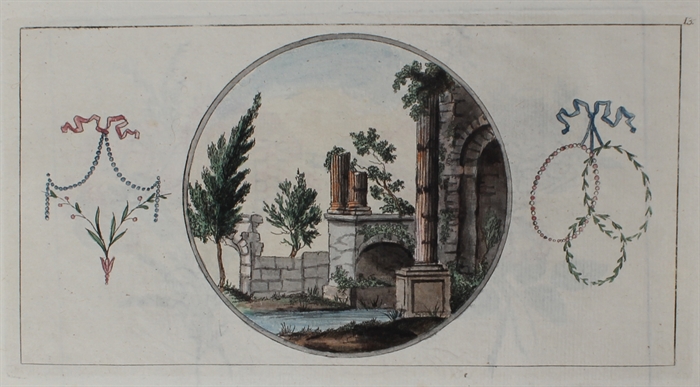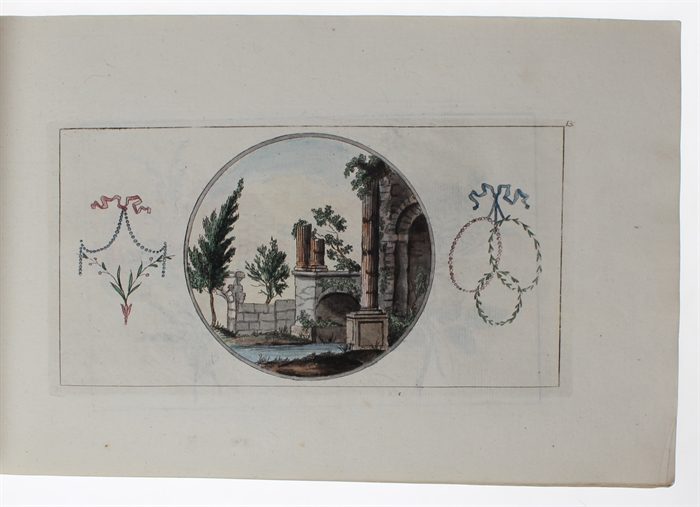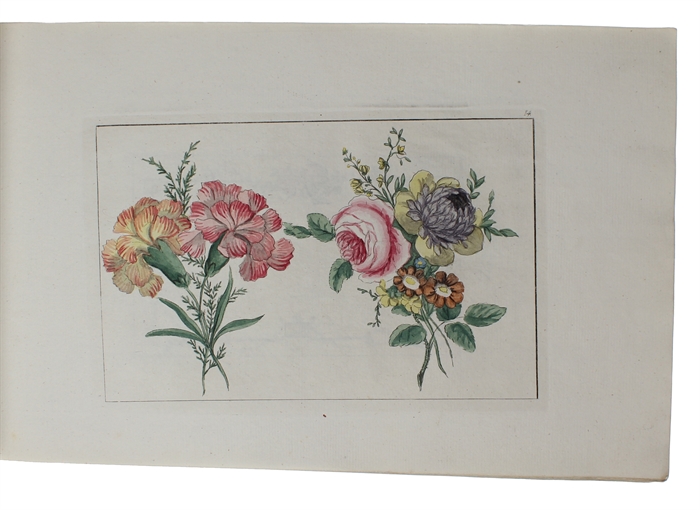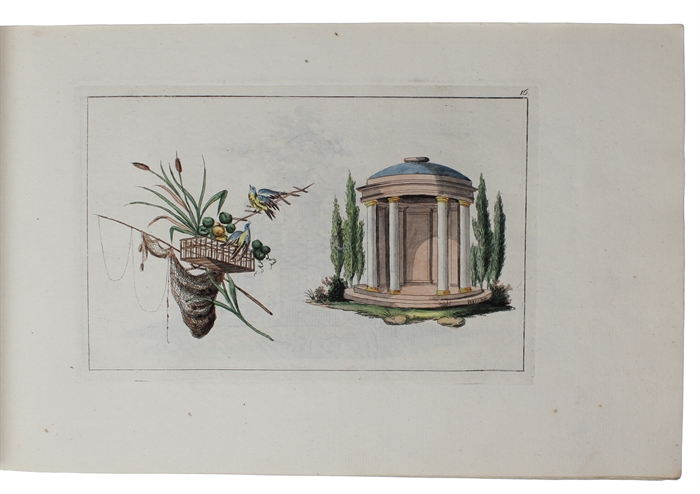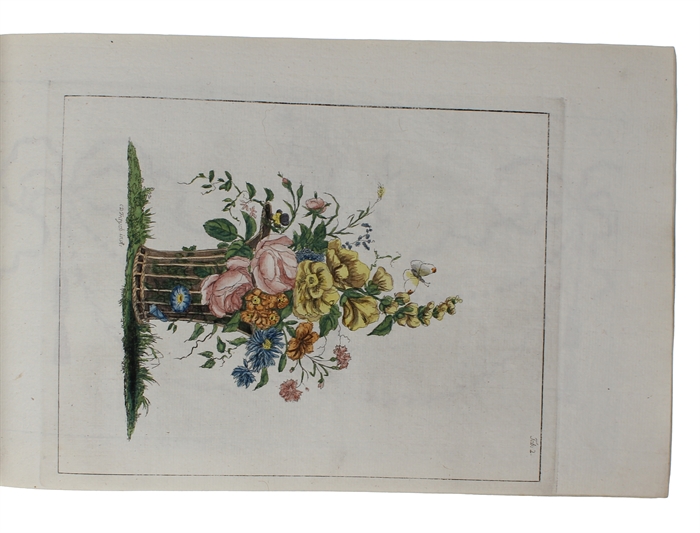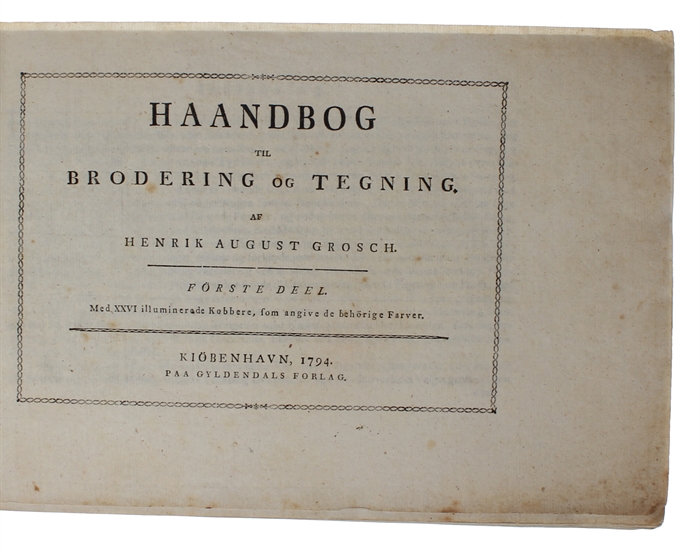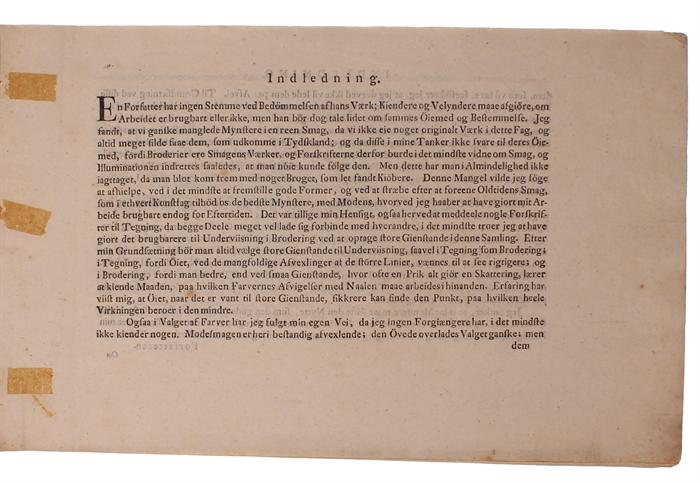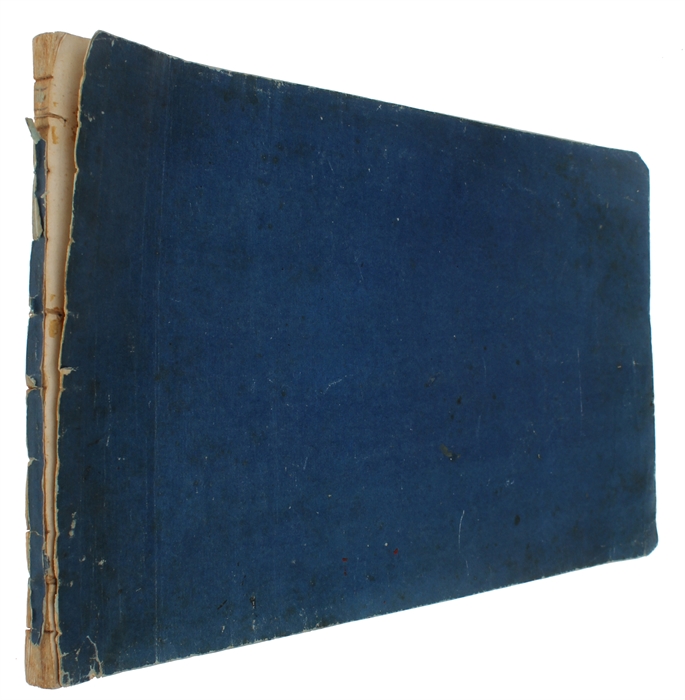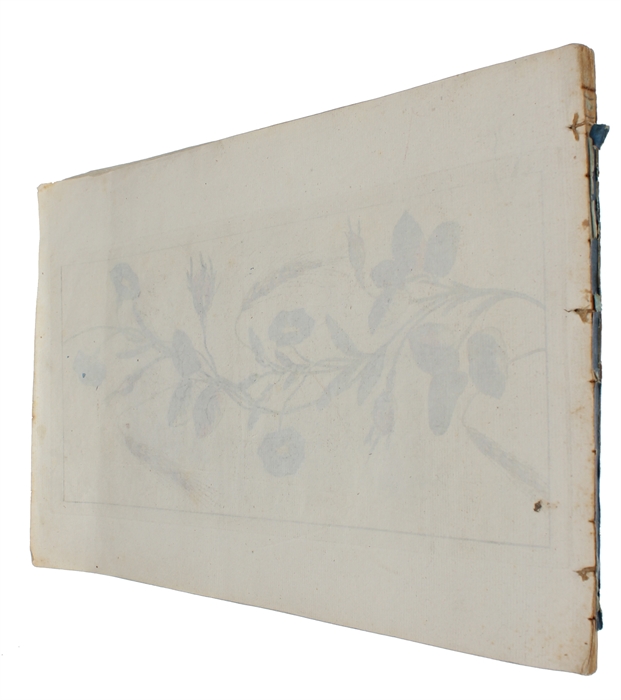THE RARE FIRST DANISH PATTERN BOOK FOR EMBROIDERY
GROSCH, HENRIK AUGUST.
Haandbog til Brodering og Tegning. (i.e. Haandbook for embroidery and drawing). 2 parts (all).
Copenhagen, Gyldendal, 1794-(1805).
Folio-oblong (320 x 202 mm). With, detached, contemporary blank blue front wrapper and spine. Spine missing upper and lower 2 cm of the blue paper. First two leaves of text with traces of tape in inner margin, not affecting text. All plates very fine and clean in fresh contemporary handcolouring. [Part I:] 12 pp + 26 handcoloured plates - complete; [Part 2] 23 handcoloured plates - presumably lacking 2 plates.
The exceedingly rare first edition of the very first Danish pattern book for embroidery. Except for the present copy, only one complete copy of part 1 is known; that copy is in the Royal Danish Library, which does not have part 2. Lilly Library holds an incomplete copy of part 1 (containing 24 plates) and the only other known copy of any part of part 2 (with 25 plates, presumably being complete). The work is so rare and known in so few copies, that no-one has been able to establish exactly what was published. We know that part 1 is complete as it is here, with 12 leaves of text and 26 plates. Part 2, however, is even scarcer with only one other copy to compare with, and whether that is complete, is uncertain. In all, our copy has 49 plates, as does the other copy known of parts 1 and 2 together (that in the Lilly Library). The work contains beautiful hand coloured plates with floral designs and ornaments for both wool foot rugs and for embroidery on silk clothing, handkerchiefs ect. Grosch was fully aware that he was treading new ground with the present publication; in the introduction he states that no comparable work has been published before and that he therefore had to make all designs and colour decisions himself, with no historical references to lean on.
Grosch grew up in Lübeck. He moved to Copenhagen in 1790 to study at the Academy of Fine Arts, in an environment best characterized by French classical ideals. Here, he particularly admired the neoclassical works of Bertel Thorvaldsen. Grosch received the academy's small silver medal in 1793, but never succeeded in becoming a member of the academy.
Heinrich August Grosch is considered an important forerunner of J. C. Dahl and Norwegian landscape painting in general. Through art, teaching, and educational writings, he made an important contribution to cultural life in Norway in the first half of the 19th century.
Grosch executed graphic works of various nature; in addition to prospectuses, portraits, and renderings of ancient ruins, he also published textbooks on drawing, calligraphy and embroidery – the present work being the rarest and most progressive.
Norsk Forfatter-Lexikon 1814-56., p. 218 (mentions both parts).
Biblioteca Danica, Supplement 209 (part 1 only).
See altso Charlotte Paludan & Lone De Hemmer Egeberg: 98 mønsterbøger til broderi, knipling og strikning, 1991.
Order-nr.: 60285

